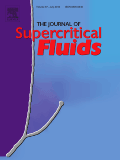
JOURNAL OF SUPERCRITICAL FLUIDS
Scope & Guideline
Fostering Collaboration Across Scientific Disciplines
Introduction
Aims and Scopes
- Supercritical Fluid Extraction (SFE):
Research related to the use of supercritical fluids for extracting valuable compounds from natural sources, such as plants and waste materials, emphasizing green and efficient extraction methods. - Supercritical Fluid Processing:
Studies that explore the use of supercritical fluids in the processing of materials, including foaming, polymerization, and coating, focusing on the unique properties of supercritical fluids. - Thermodynamic and Kinetic Modeling:
Investigations involving the thermodynamic behavior and kinetic modeling of processes involving supercritical fluids, which are crucial for optimizing extraction and processing techniques. - Environmental Applications:
Research that applies supercritical fluid technologies for environmental remediation, waste treatment, and sustainable practices aimed at reducing ecological footprints. - Material Synthesis and Modification:
Exploration of supercritical fluids in the synthesis and modification of materials, including nanostructured materials and composites, showcasing their potential for innovative applications.
Trending and Emerging
- Biorefinery and Waste Valorization:
There is a growing emphasis on using supercritical fluids for biorefinery applications and the valorization of agricultural and industrial waste, aligning with global sustainability goals. - Nanotechnology and Supercritical Fluids:
The integration of nanotechnology with supercritical fluid processes is emerging, focusing on the synthesis and functionalization of nanomaterials for various applications. - Pharmaceutical Applications:
An increasing number of studies are exploring the use of supercritical fluids in pharmaceutical processes, including drug delivery systems, encapsulation, and extraction of bioactive compounds. - Interfacial and Transport Phenomena:
Research into the interfacial and transport properties of supercritical fluids is on the rise, with implications for enhancing extraction efficiency and material processing. - Machine Learning and Computational Approaches:
The application of machine learning and advanced computational techniques to optimize supercritical fluid processes and predict behaviors is gaining momentum, reflecting a trend towards data-driven research.
Declining or Waning
- Traditional Solvent Extraction Methods:
The focus on conventional extraction techniques has waned as researchers increasingly adopt supercritical fluid extraction for its efficiency and environmental benefits. - Basic Physical Chemistry of Supercritical Fluids:
The foundational studies related to the basic physical chemistry of supercritical fluids have decreased as the field shifts towards more application-oriented research. - Single-Component Solubility Studies:
Research centered solely on the solubility of individual compounds in supercritical fluids is becoming less common, giving way to more complex multicomponent systems that reflect real-world applications. - Low-Pressure Supercritical Processes:
There is a noticeable decline in publications focusing on low-pressure supercritical processes, as high-pressure applications are gaining more attention for their enhanced efficiency and capabilities. - Theoretical Studies without Experimental Validation:
The trend of publishing purely theoretical studies, lacking experimental validation, is decreasing as the journal emphasizes practical applications and experimental corroboration.
Similar Journals

LCGC EUROPE
Connecting researchers to the pulse of chromatographic advancements.LCGC EUROPE is a prominent journal dedicated to the field of analytical chemistry, specifically highlighting the latest trends and innovations in chromatographic techniques. Published by MJH Life Sciences, this journal has served as a valuable resource for researchers, professionals, and students interested in the nuances of laboratory practices and the advancement of instrumentation. Although LCGC EUROPE ceased its coverage in Scopus from 2018, it has maintained a significant influence within the community, evidenced by its Scopus rank of 90/114 in Analytical Chemistry, placing it in the 21st percentile. With its inception dating back to 1996, the journal provided essential insights and peer-reviewed articles, fostering a rich understanding of chromatographic science. While the journal is not currently open access, it remains an integral part of the literature for anyone engaged in the analytical chemistry landscape, especially as it pertains to laboratory methodologies and innovations.
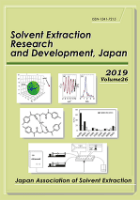
SOLVENT EXTRACTION RESEARCH AND DEVELOPMENT-JAPAN
Elevating industry standards with cutting-edge research.SOLVENT EXTRACTION RESEARCH AND DEVELOPMENT-JAPAN is a prominent journal dedicated to advancing the field of solvent extraction and its applications in chemical engineering and general chemistry. Published by the Japan Association for Solvent Extraction, this journal plays a crucial role in disseminating innovative research findings, technical advancements, and comprehensive reviews pertinent to solvent extraction processes and technologies. With a publication history dating back to 1996 and extending through 2024, it serves as a vital resource for academics, industry professionals, and students alike. Although it currently does not offer open access, the journal provides invaluable insights into solvent extraction which can enhance both theoretical knowledge and practical applications in various industries. Its Scopus rankings indicate a competitive presence in the field, making it an essential read for anyone engaged in chemical engineering research. The journal is accessible via its office located at Professor Kenichi Akiba's residence at the University of Kitakyushu, and it invites contributions from researchers aiming to elevate the understanding and efficiency of solvent-based methodologies in chemical processes.
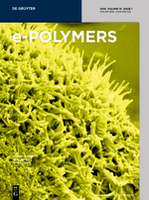
E-POLYMERS
Pioneering Research at the Intersection of Chemistry and EngineeringE-Polymers, an esteemed journal published by De Gruyter Poland Sp. z o.o., serves as a vital platform for advancing knowledge in the fields of chemical engineering, polymer science, and theoretical chemistry. With its Open Access policy since 2019, researchers from around the globe can freely access and disseminate groundbreaking findings that span the convergence of diverse disciplines, making it an indispensable resource for both academia and industry. The journal is recognized for its significant impact, reflected in its Q2 ranking in Chemical Engineering, Physical and Theoretical Chemistry, and Polymers and Plastics categories in 2023. Its impressive Scopus rankings further solidify its position, showcasing a percentile rank of 70th and above across major categories. With a publication history extending from 2001 to 2024, E-Polymers continually addresses pressing challenges within the polymer research community, fostering innovation and collaboration among researchers, professionals, and students eager to contribute to the evolving landscape of materials science.
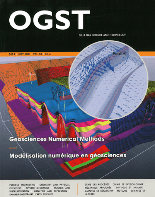
Oil & Gas Science and Technology-Revue d IFP Energies nouvelles
Pioneering Solutions for a Sustainable FutureOil & Gas Science and Technology - Revue d'IFP Energies nouvelles, published by EDP SCIENCES S A, is a distinguished journal in the field of energy science, specifically focusing on the latest advancements in oil and gas technologies. Since its transition to Open Access in 1997, the journal has been dedicated to disseminating high-quality research that addresses the challenges and innovations inherent in energy engineering and fuels. With an ISSN of 1294-4475 and an E-ISSN of 1953-8189, this journal holds a significant position in academic circles, reflecting its contributions to sustainable energy solutions. The journal's rankings in Scopus showcase its impact, particularly in the areas of Energy Engineering and Power Technology (Rank #105/224), Chemical Engineering (Rank #131/279), and Fuel Technology (Rank #51/100). As a pivotal resource for researchers, professionals, and students, it aims to foster knowledge exchange and promote innovative technologies essential for the ongoing evolution of the energy sector.
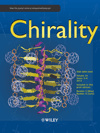
CHIRALITY
Navigating the Complexities of Chirality in Modern ScienceCHIRALITY is a prominent journal in the field of chemistry, published by Wiley. Established in 1989, it has become a critical resource for researchers and professionals interested in the intricate study of chiral compounds across various applications, including analytical chemistry, catalysis, drug discovery, organic chemistry, pharmacology, and spectroscopy. With an ISSN of 0899-0042 and an E-ISSN of 1520-636X, CHIRALITY currently holds a Q2 ranking in Analytical Chemistry and Q3 rankings in several other categories based on the latest assessments. Although it does not offer open access, the journal is widely recognized for disseminating high-quality research that contributes significantly to our understanding of chirality. Its impact is reflected in its Scopus rankings, indicating the journal's influence and relevance within the broader scientific community. Researchers, students, and professionals alike will find CHIRALITY an invaluable conduit for cutting-edge findings and developments in chirality-related research.

THEORETICAL FOUNDATIONS OF CHEMICAL ENGINEERING
Innovating Through Rigorous Theoretical DiscourseTHEORETICAL FOUNDATIONS OF CHEMICAL ENGINEERING is an esteemed academic journal published by PLEIADES PUBLISHING INC, dedicated to advancing the field of chemical engineering and chemistry through rigorous theoretical discourse and scholarly communication. With a history of publication dating back to 1974, the journal has been a vital resource for researchers and professionals, contributing to the foundation of knowledge in this multidisciplinary domain. Although it does not offer open-access options, it remains an essential platform for innovative research, boasting a 2023 ranking in the Q3 quartile for both Chemical Engineering and General Chemistry categories. The journal is indexed in Scopus, where it ranks #210 out of 273 in Chemical Engineering and #317 out of 408 in Chemistry, emphasizing its growing relevance within the scholarly community. Researchers, educators, and students alike can benefit from the insights and findings shared within its pages, making it a critical venue for those seeking to enhance their expertise in theoretical chemical engineering.
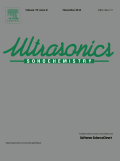
ULTRASONICS SONOCHEMISTRY
Advancing the Frontiers of Sonochemistry through Ultrasonic Innovation.ULTRASONICS SONOCHEMISTRY, published by ELSEVIER, is a pioneering Open Access journal that has been at the forefront of research in the fields of acoustics, ultrasonics, and their applications in chemical engineering, environmental science, and radiology since its inception in 1994. With an impressive Impact Factor and ranking amongst the top quartile journals across multiple disciplines such as Organic Chemistry, Inorganic Chemistry, and Environmental Chemistry, it serves as an essential platform for researchers and professionals seeking to disseminate their work and advance knowledge in sonochemistry and related areas. The journal's commitment to accessibility since 2021 ensures that high-quality research is openly available, thus fostering collaboration and innovation within the scientific community. As it converges into 2024, ULTRASONICS SONOCHEMISTRY continues to uphold its reputation for excellence and encourages the submission of groundbreaking studies that explore the synergistic effects of ultrasound in chemical processes.
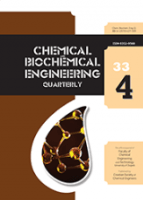
CHEMICAL AND BIOCHEMICAL ENGINEERING QUARTERLY
Exploring the Frontiers of Chemical and Biochemical ResearchCHEMICAL AND BIOCHEMICAL ENGINEERING QUARTERLY, published by the Croatian Society of Chemical Engineering Technology, is a distinguished open-access journal that has been providing a platform for the dissemination of innovative research since its inception in 1987. With a focus on the fields of biochemistry and chemical engineering, this quarterly journal addresses a wide array of topics, including process chemistry and technology, making significant contributions to both academia and industry. Despite its current positioning in the Q4 category for biochemistry and Q3 for miscellaneous chemistry and process chemistry in 2023, the journal continues to strive for greater impact, catering to researchers, professionals, and students alike. Its open-access model, in place since 2001, ensures that cutting-edge research is accessible to a broad audience, fostering collaboration and knowledge sharing within the scientific community. By promoting high-quality research and providing insights into the latest advancements, Chemical and Biochemical Engineering Quarterly remains an essential resource for those involved in the chemical and biochemical engineering disciplines.
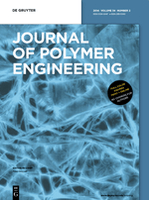
JOURNAL OF POLYMER ENGINEERING
Connecting Ideas for a Sustainable Polymer Future.JOURNAL OF POLYMER ENGINEERING, published by Walter de Gruyter GmbH, stands as a pivotal platform in the field of polymer science and engineering. With an ISSN of 0334-6447 and an E-ISSN of 2191-0340, this journal has been a vital contributor to the academic landscape since its inception, spanning publications from 1981 to 2024. As a recognized entity in the realms of Chemical Engineering, Materials Chemistry, and Polymers and Plastics, it holds a respectable position in Q3 quartile rankings according to the latest assessments. The journal is positioned to promote the exchange of cutting-edge research findings, technological advancements, and critical reviews that address the complexities of polymer application and innovation. Researchers and professionals will find a wealth of information, from experimental methodologies to theoretical analyses, all designed to inspire and elevate the current understanding of polymer engineering. By fostering collaboration and dissemination of knowledge, the JOURNAL OF POLYMER ENGINEERING remains crucial for advancing research and education in its specialized domains.

Eurasian Chemico-Technological Journal
Unlocking New Perspectives in Interdisciplinary Chemistry and EngineeringEurasian Chemico-Technological Journal, published by the Institute of Higher Education Academy of Sciences in Kazakhstan, serves as a dynamic platform for scholars and professionals engaged in the interdisciplinary fields of chemical engineering, chemistry, condensed matter physics, and materials science. Since its inception in 1999, the journal has embraced an open access model, enabling broad dissemination of research findings and fostering collaborative innovation across borders. With an ISSN of 1562-3920 and a converged publication schedule extending from 2007 to 2024, it continues to contribute to the global academic dialogue, despite its current standing in Q4 quartiles across several categories on Scopus. The journal ranks in the lower percentiles within its respective fields, yet it remains a valuable resource for emerging research and perspectives within the scientific community. This journal is essential for both seasoned researchers and students, as it reflects the evolving landscape of chemico-technological research while promoting engagement with contemporary issues in the sciences.